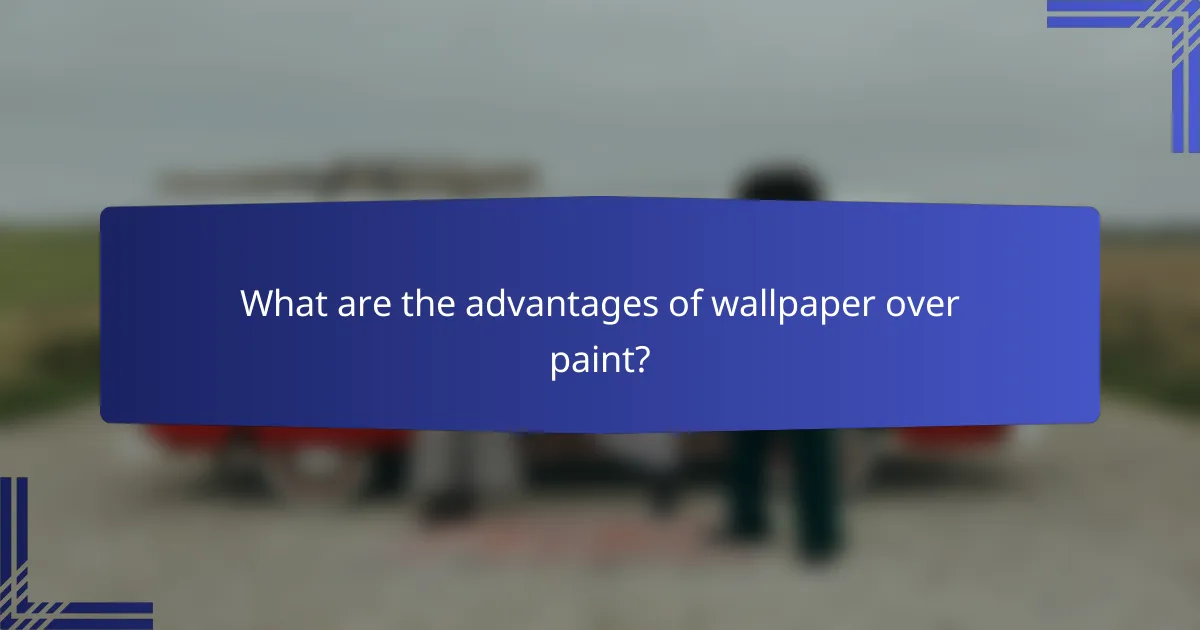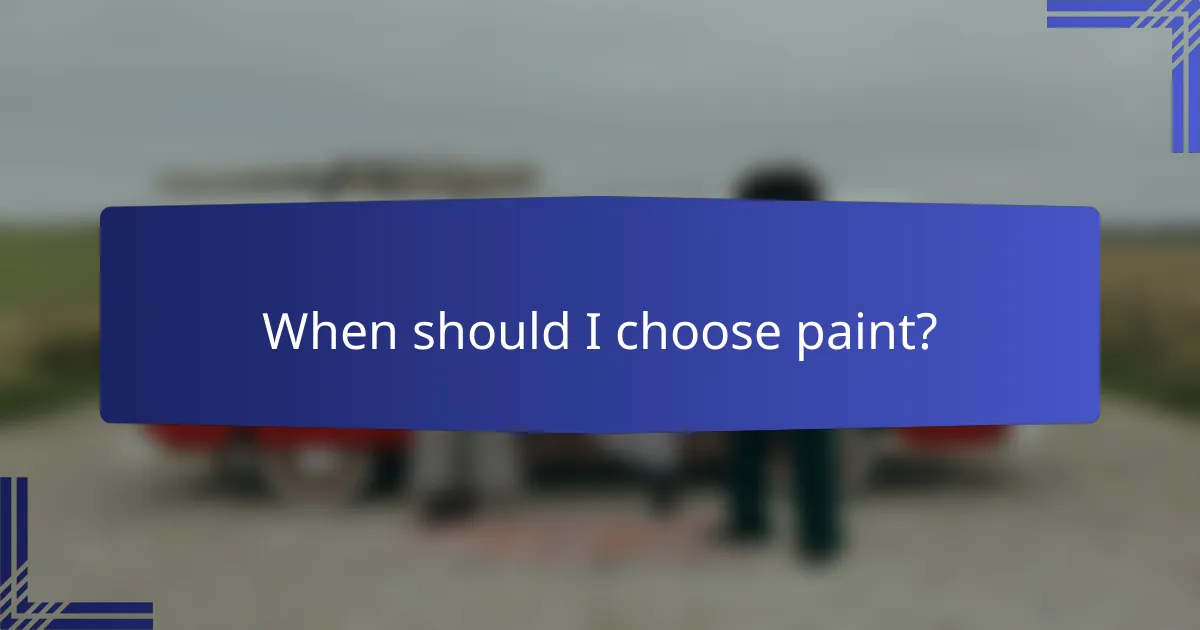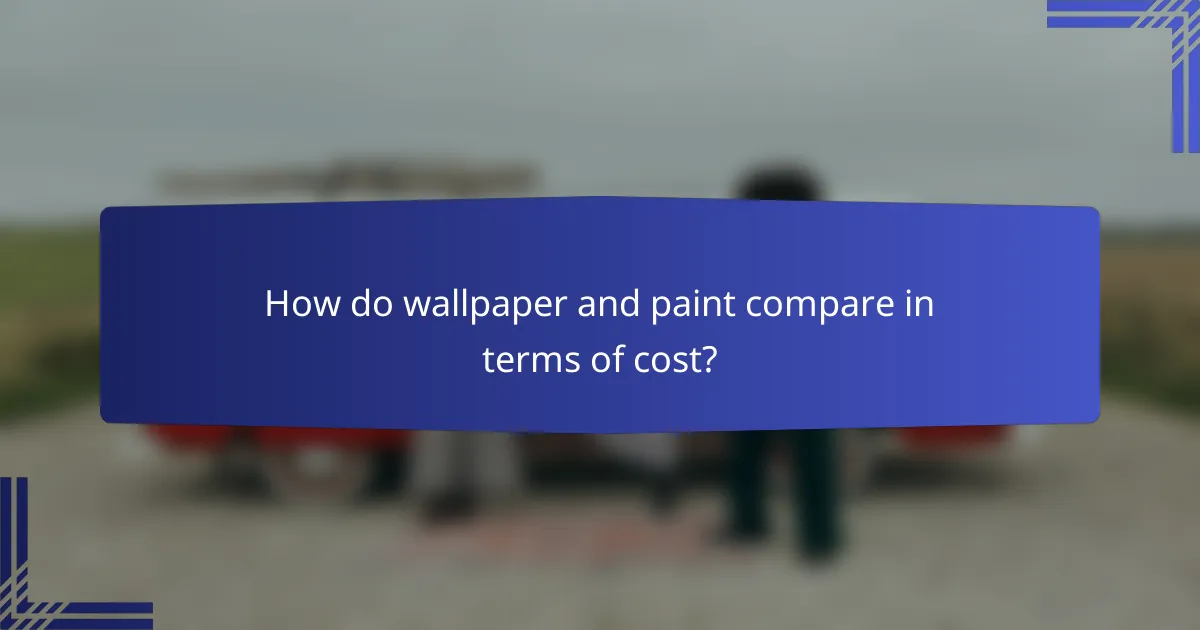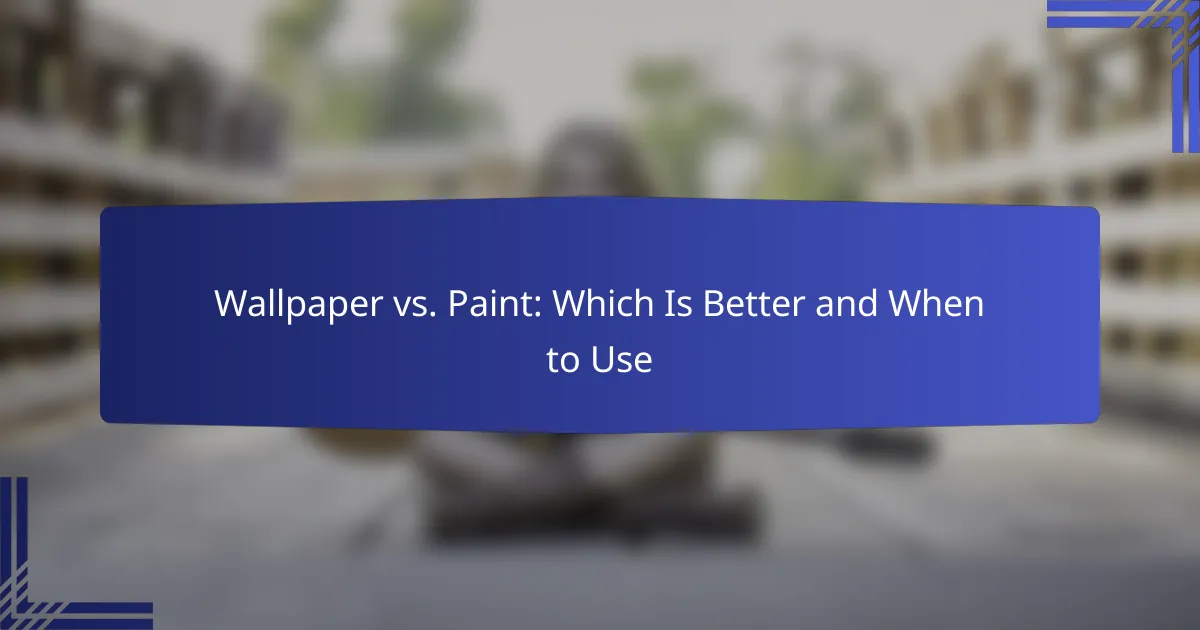Choosing between wallpaper and paint can significantly impact the look and feel of your space. Wallpaper provides unique designs and durability, making it ideal for adding texture and character, while paint offers versatility and cost-effectiveness for a quick refresh. Understanding the strengths of each option can help you make an informed decision based on your specific needs and aesthetic preferences.

What are the advantages of wallpaper over paint?
Wallpaper offers several advantages over paint, including a wider range of designs, greater durability, and easier maintenance. These features make wallpaper a popular choice for many homeowners looking to enhance their interior spaces.
Variety of designs and textures
One of the most significant advantages of wallpaper is the extensive variety of designs and textures available. Homeowners can choose from patterns ranging from classic florals to modern geometrics, allowing for personalized aesthetics that paint cannot match. Textured wallpapers can add depth and character to a room, creating a unique atmosphere.
Additionally, many wallpapers are available in materials that mimic natural elements, such as wood or stone, providing an elegant look without the high cost of real materials. This variety allows for creative expression and can cater to different interior design styles.
Durability and longevity
Wallpaper is generally more durable than paint, making it a long-lasting option for home decor. High-quality wallpaper can withstand wear and tear better than paint, which may chip or fade over time. This durability means that wallpaper can maintain its appearance for years, reducing the need for frequent updates.
Moreover, certain types of wallpaper, such as vinyl, are resistant to moisture and stains, making them suitable for high-traffic areas like kitchens and bathrooms. This resilience can ultimately save homeowners money on repairs and replacements.
Easy to clean and maintain
Cleaning wallpaper is often easier than maintaining painted walls. Many modern wallpapers are washable, allowing homeowners to wipe away dirt and stains without damaging the design. This feature is particularly beneficial in homes with children or pets, where walls are more susceptible to marks and spills.
In contrast, painted walls may require touch-ups or complete repainting after significant stains or damage. With wallpaper, minor imperfections can often be addressed without extensive work, making it a practical choice for busy households.

What are the advantages of paint over wallpaper?
Paint offers several advantages over wallpaper, including cost-effectiveness, ease of application, and a wider range of color choices. These factors make paint a popular option for many homeowners and renters looking to refresh their spaces.
Cost-effectiveness
Paint is generally more affordable than wallpaper, especially when considering the cost of materials and installation. A gallon of quality paint can cover a significant area, often costing between $20 to $60, while wallpaper can range from $30 to over $100 per roll, not including installation fees.
Additionally, maintenance costs for paint are typically lower. If a wall gets scuffed or stained, a quick touch-up with paint is often all that’s needed, while wallpaper may require complete replacement if damaged.
Ease of application
Applying paint is usually simpler and quicker than hanging wallpaper. Most homeowners can paint a room themselves with just a few tools, while wallpaper installation often requires professional help or more advanced skills.
Paint dries quickly, allowing for faster project completion. Most latex paints can dry within one to two hours, enabling multiple coats in a single day, whereas wallpaper can take longer to apply and requires careful alignment and smoothing.
Flexibility in color choices
Paint offers an extensive range of colors and finishes, allowing for easy customization to match any decor. Home improvement stores typically carry thousands of paint colors, and mixing custom shades is straightforward.
In contrast, while wallpaper designs can be unique and artistic, they are often limited to specific patterns and colors. This can restrict your options if you want to change the look of a room frequently or adapt to new trends.

When should I choose wallpaper?
Wallpaper is an excellent choice when you want to add texture, pattern, or durability to your walls. It can be particularly beneficial in specific situations where paint may not hold up as well or achieve the desired aesthetic.
For high-traffic areas
In high-traffic areas like hallways or entryways, wallpaper can be more durable than paint. Many wallpapers are designed to withstand wear and tear, making them less likely to scuff or chip. Consider vinyl or washable options for easy cleaning and maintenance.
When selecting wallpaper for these spaces, look for thicker materials or those with protective coatings. This can help ensure longevity and maintain a fresh appearance even with frequent use.
To create a focal point
Wallpaper is ideal for creating a striking focal point in a room, such as an accent wall. A bold pattern or vibrant color can draw attention and enhance the overall design of the space. Choose a design that complements your existing decor for a cohesive look.
When using wallpaper as a focal point, consider the scale of the pattern. Larger patterns work well in spacious rooms, while smaller patterns may be better suited for compact areas. Balance is key to achieving an appealing aesthetic.
In rooms with moisture
For rooms with high moisture levels, such as bathrooms or kitchens, wallpaper can be a better option than paint. Certain types of wallpaper, especially vinyl, are resistant to moisture and can prevent mold and mildew growth. This makes them suitable for humid environments.
When choosing wallpaper for moisture-prone areas, ensure it is specifically labeled as water-resistant. Additionally, proper installation and sealing around edges can further protect against moisture damage, extending the lifespan of the wallpaper.

When should I choose paint?
Choosing paint is ideal when you need a quick, cost-effective solution for transforming a space. It offers versatility and ease of application, making it suitable for various situations, especially when you want to refresh a room without a long-term commitment.
For quick renovations
Paint is the go-to choice for quick renovations due to its fast application and drying time. A single coat can often be completed in a few hours, allowing you to see immediate results. This is particularly beneficial when preparing a home for sale or updating a room before an event.
Consider using spray paint or a roller for larger areas to speed up the process. Always ensure proper ventilation and use drop cloths to protect your furniture and floors.
In rental properties
In rental properties, paint is often preferred because it allows tenants to personalize their space without the permanence of wallpaper. Many landlords permit tenants to paint as long as they return the walls to the original color upon moving out.
Opt for neutral colors that appeal to a broader audience, making the space feel inviting while still being easy to revert. Always check your lease agreement for any specific rules regarding painting.
For a minimalist look
Paint is ideal for achieving a minimalist aesthetic, as it provides a clean, simple finish that can enhance the overall design of a space. Solid colors can create a calm environment, while lighter shades can make rooms appear larger and more open.
To maintain a minimalist look, choose a limited color palette and avoid busy patterns. This approach allows for easy integration with furniture and decor, keeping the focus on simplicity and functionality.

How do wallpaper and paint compare in terms of cost?
Wallpaper and paint have distinct cost structures that can influence your choice. While paint typically has a lower initial investment, wallpaper may offer longer-lasting value depending on the design and material.
Initial investment differences
The initial cost of paint is generally lower, with average prices ranging from $20 to $60 per gallon, depending on quality and brand. In contrast, wallpaper can cost anywhere from $15 to $100 per roll, with designer options going even higher. Consider the size of the area to be covered, as this will significantly impact your total upfront costs.
When budgeting, remember to factor in additional expenses such as primer for paint or adhesive for wallpaper. These can add $10 to $30 to your overall costs, depending on the products you choose.
Long-term maintenance costs
Over time, paint may require more frequent touch-ups or complete repaints, especially in high-traffic areas. This can lead to long-term costs that accumulate over the years. In contrast, wallpaper, when properly maintained, can last a decade or more without needing replacement, making it a potentially more economical choice in the long run.
However, if wallpaper becomes damaged or outdated, removal can be labor-intensive and costly. Weigh the potential need for repairs or updates against the longevity of your initial choice to determine the best option for your situation.
